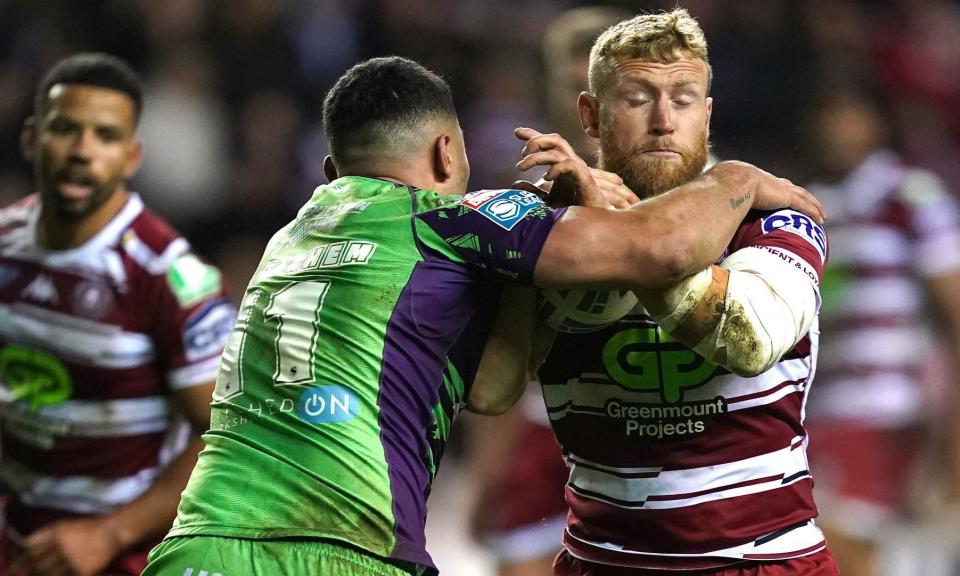Super League cuts number of head collisions after tackle height law change

Super League has successfully reduced head collisions by a significant margin in the opening weeks of the new season after an overhaul of the sport’s tackle height laws.
The Rugby Football League approved a number of changes during the winter designed at better protecting players and minimising contact with the head, introducing stricter punishments for players who make head contact in a tackle. The changes were met by a backlash in the early weeks of the season, but early data seen by the Guardian has shown they are making a difference.
Related: Rugby league kick-off rules could be changed to reduce collisions, NRL says
Since the governing body started collating tackle statistics in 2018, 13% in Super League included some form of contact with the head. In 2024, that has been reduced to 4.2%, essentially meaning there are several hundred fewer tackles making contact with the head compared with this stage last year.
The number of players being diagnosed with concussions, however, has remained constant. That is in part due to a significant increase in the number of players wearing instrumented mouthguards, which help determine a player’s risk of a head injury and enable them to be removed from the action.
More than 75% of Super League players are wearing the guards this year, up from 15% last season. The expectation is that concussion rates will decrease in the coming months, particularly when the sport lowers the legal limit for contact to below the armpit at professional level from next year.
At present, contact below the neck is deemed legal but the RFL hoped that by introducing stricter punishments for head contact this year player behaviour would change sufficiently. That would avoid a marked difference in the look of the sport when the changes are formally introduced.
The number of yellow cards has increased, but there has been a dramatic reduction in players charged for contact with the head since the beginning of the season, something the governing body attributes to a positive change in player behaviour. Sixteen players were charged after the opening round of Super League games; there were no charges last weekend.
The change in player behaviour is also shown by the number of penalties, which has stabilised to last year’s average. The opening round featured a record 90 penalties awarded but that has reduced to below 60 in recent weeks. Last year’s average for six fixtures was 58 penalties per round.

 Yahoo Sport
Yahoo Sport 





































